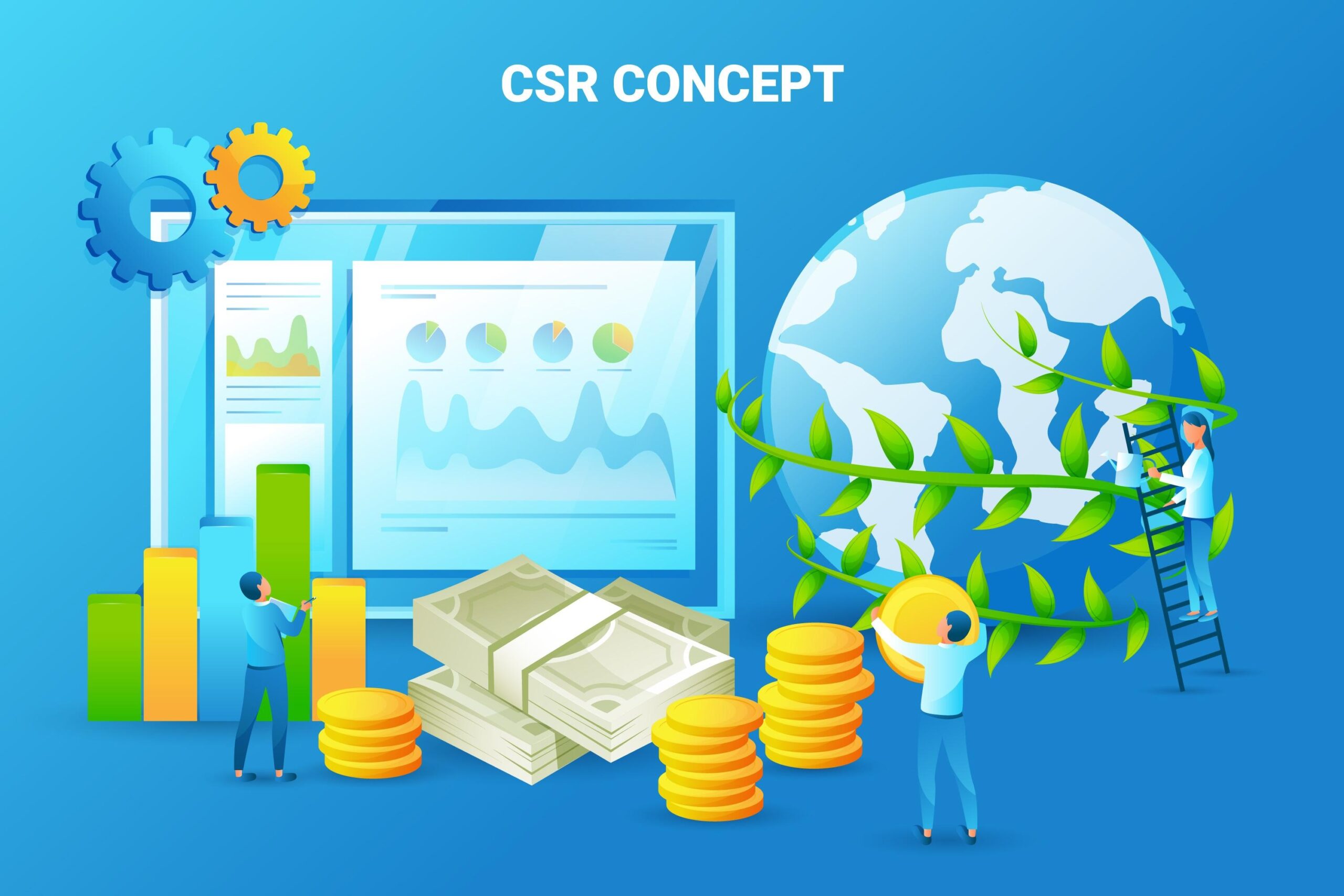Today, companies aren’t judged only by their products or profits—they’re also judged by how they treat people and the planet. This is where a well-thought-out CSR strategy (Corporate Social Responsibility strategy) comes in. It’s not just about ticking a “good deeds” box; it’s about making a real difference while staying true to what your business stands for.
If you’ve ever wondered how to create a CSR plan that’s simple, practical, and genuinely impactful, this guide will walk you through it. Let’s break down the steps in designing CSR strategy into 8 easy actions you can start working on today.
What is CSR Strategy?
Think of a CSR strategy as your company’s moral compass—a roadmap that helps you contribute positively to society while running your business.
Instead of doing random charitable activities once in a while, it gives your efforts direction. Some of the best CSR strategies tackle big issues like climate change, education, diversity, or employee well-being.
In short, CSR planning and strategy ensures that your good intentions translate into real, measurable impact.
How to Develop a CSR Strategy: 8 Steps
If you’re wondering how to create a practical and effective plan, here are the steps in designing CSR strategy that will guide you:
1. Identify Your Core Values and Purpose
Every successful CSR implementation strategy begins with clarity. Ask: What does your company stand for? Align your initiatives with your mission and vision. For example, a tech firm might focus on digital literacy programs, while a manufacturing company might prioritize reducing carbon emissions.
2. Understand Stakeholder Expectations
Your CSR efforts should reflect the needs and concerns of stakeholders—employees, customers, investors, and the community. Conduct surveys, interviews, or focus groups to understand their priorities. This builds trust and ensures long-term support.
3. Assess Social and Environmental Impact Areas
Perform a materiality assessment to identify key issues that intersect with your business operations—such as sustainability, diversity, or community welfare. Focusing on areas where you can make the biggest difference ensures resources are well utilized.
4. Set Clear, Measurable Goals
Your CSR planning and strategy must have specific objectives. For instance, instead of saying “reduce waste,” set a measurable target like “reduce plastic packaging by 40% within three years.” This clarity makes it easier to measure success.
5. Design CSR Programs and Initiatives
This is where you map your actions. Whether it’s renewable energy adoption, community education programs, or employee volunteerism, design initiatives that reflect your goals. The best CSR strategies are innovative, scalable, and tied to business strengths.
6. Allocate Resources and Build Partnerships
CSR cannot thrive without investment. Allocate financial, human, and technological resources to ensure sustainability. Collaborate with NGOs, government bodies, or social enterprises to amplify your impact.
7. Implement and Communicate Your Strategy
Effective CSR implementation strategy requires internal alignment. Involve employees, train them, and make them ambassadors of your CSR vision. Communicate your initiatives transparently through sustainability reports, websites, and social media.
8. Monitor, Measure, and Improve
Use KPIs (Key Performance Indicators) to track progress. For example, measure carbon footprint reduction, community impact, or employee participation rates. Regular assessments ensure accountability and continuous improvement.
CSR Strategy Example
Here’s a quick CSR strategy example to show how this works in real life:
Company: A mid-sized retail brand
Focus Areas: Sustainability + Community Support
- Switched to eco-friendly packaging, cutting plastic waste by 60%.
- Partnered with local NGOs to train underprivileged youth in vocational skills.
- Offered employees two paid days off each year to volunteer in local causes.
This shows how a simple, focused CSR strategy can touch multiple lives while still aligning with business goals.
Final Thoughts
Building a robust CSR strategy is not just about philanthropy—it’s about aligning business with purpose. By following these 8 steps, you can create impactful programs, strengthen your brand image, and contribute to a sustainable future. Whether you’re a startup or a global corporation, a thoughtful CSR implementation strategy can create lasting change for both your business and society.
FAQs on CSR Strategy
Q1. Why is a CSR strategy important for businesses?
A CSR strategy strengthens brand reputation, builds stakeholder trust, enhances employee engagement, and drives long-term sustainable growth.
Q2. How can small businesses create a CSR strategy?
Small businesses can start with low-cost initiatives like energy conservation, employee volunteering, or supporting local causes. The key is consistency, not scale.
Q3. What are examples of the best CSR strategies?
The best CSR strategies focus on sustainability, education, diversity, fair trade, and community development while directly connecting to business values.
Q4. How is CSR implementation strategy different from planning?
CSR planning outlines the goals and programs, while CSR implementation focuses on executing them effectively, monitoring progress, and reporting outcomes.
Q5. Can CSR strategy improve profitability?
Yes. Studies show companies with strong CSR practices experience higher customer loyalty, better investor confidence, and increased long-term profitability.



